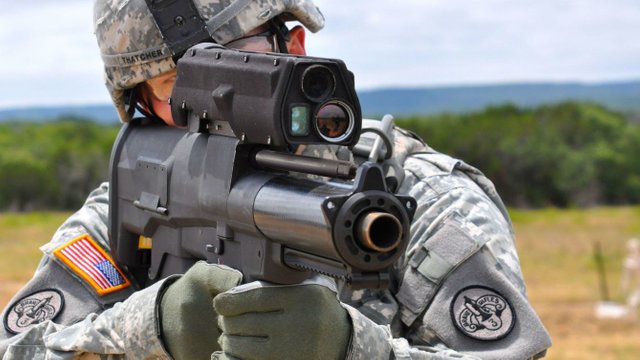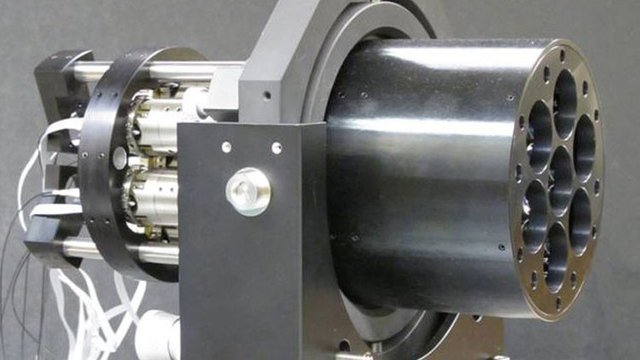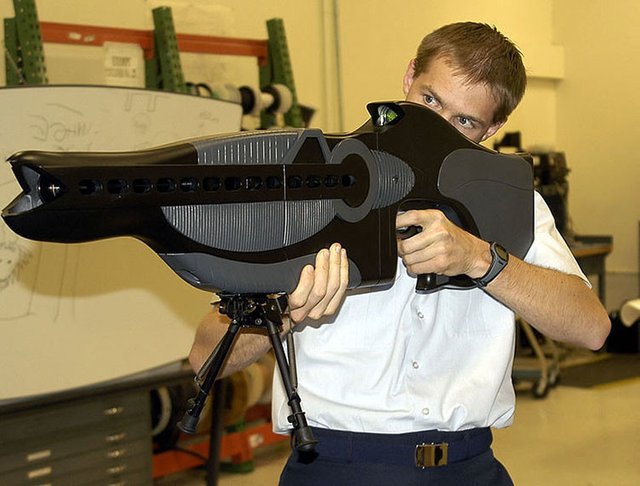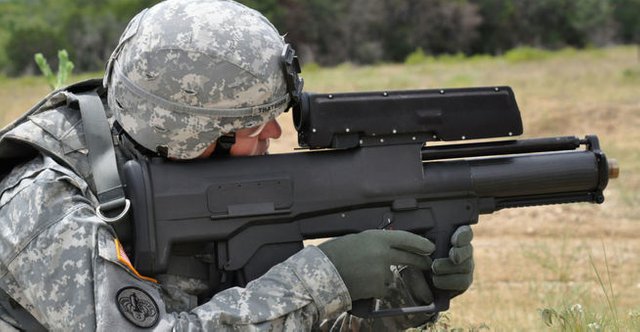The most advanced electromagnetic weapons in the US

It seems that the USA He is preparing for an all-out war. The US military is expanding the use of cybernetic capabilities in order to achieve a tactical advantage in a military conflict using radio, radar, infrared, optical, ultraviolet, electro-optical and laser technologies. What are the most advanced electromagnetic weapons in the US?

Heating waves
The active repulsion system or ADS (for its acronym in English) is a non-lethal 'gun' that shoots a beam of electromagnetic waves at a distance of up to 1,000 meters and causes such annoying heating that it forces the 'target' to flee scared, informs 'Business Insider'.
According to Tracy Tafolla, the director of the company Directorate of Non-Lethal Weapons, this riot gear is the safest of all manufactured to date. "You do not see it, you do not hear it, you do not smell it, you only feel it," he said.
The rays that the weapon emits make you feel like you are in a furnace. To prevent possible damage to health, the beam automatically turns off after being active for three seconds.
According to its creators, the weapon is much safer than the tear gas and rubber bullets applied today.
Dazzling laser
The tactical assault rifle Phasr, developed by the Air Force, is a laser system with dual wavelength that causes temporary blindness of the target.

It has the same effect as opening your eyes in the middle of the night while someone lights your face with a flashlight.
Airborne laser
USA has carried out several test flights with its YAL-1 system that uses an oxygenated iodine chemical laser installed on board an aircraft. It is designed primarily for the elimination of ballistic missiles, while they are in the propulsion phase.

The system uses six infrared sensors to detect the plume of the missile and activates a laser to capture and follow the target. Another laser measures interference in the atmosphere while an adaptive optical system makes adjustments so that the third laser, HEL, aims precisely at the target and destroys its structural integrity.
Next Generation Jammer
The Next Generatioin Jammer (NGJ) electronic warfare system is being developed to incapacitate hostile command and control systems before an offensive air attack. It will be installed in the Boeing EA-18G, a fighter-bomber adapted to electronic warfare.
The anti-radar missile AGM-88
It is a smokeless high-speed missile that destroys air defense systems equipped with radars in order to neutralize hostile airspace and deprive the enemy of the ability to defend themselves.
The CHAMP missile of Boeing
The US aerospace company Boeing successfully tested a CHAMP microwave missile ('Counter-electronics High-powered Advanced Missile Project') capable of blocking enemy electronic systems.
During the test the missile fired a powerful microwave burst at a building, successfully paralyzing electronic systems and computers, and even television cameras, without causing collateral casualties.
A towed countermeasure
AN / ALE-55 is a fiber optic countermeasure towed by fighters, bombers and transport aircraft to deflect radio frequency-guided threats, such as missiles targeting aircraft.
It is the last instance in the three layers of aircraft defense, and works in conjunction with on-board electronics. If the interference and signal suppression systems fail, the countermeasure will simply deflect the missile playing the role of false target.
Better shoot
Knowing where the enemy is is much better than not knowing, but the ideal is to be able to shoot him before he shoots you. The ability to reach an enemy when he is indoors involves changing the rules of the game for the infantry: being able to shoot someone hidden behind a wall or in a ditch makes it difficult to ambush the opponent and facilitates the attack of one's own forces. For this task, the XM25 CDTE grenade launcher ('counter defilade target engagement') was designed, which will finally be distributed to the troops in large numbers from 2017 after a lengthy and controversial development process. It promises to be a before and after.

The XM25 is the first light weapons system that can be described as intelligent, that is, it makes use of electronics to function. It is a semi-automatic grenade launcher that uses several types of 25 mm diameter grenades with various explosive charges. The weapon is equipped with a laser distance meter that transmits its information to the grenade before firing: the user can adjust the exact distance to which he wishes the grenade to explode in the air. The projectile 'counts' the distance using its own rotation since leaving the barrel; the explosion, when occurring at medium height, can whip whites that are deflected very efficiently. The grenade launcher weighs just over six kilos empty, so it can be transported and operated by a soldier with ease, has an effective range of up to 600 to 700 meters and uses five-grenade chargers.
According to the studies of the US Army, the XM25's grenades are up to three times more effective, exploding at half height, than any other grenade launcher of equal caliber in their arsenal, and the range of the weapon is also superior. After a long process of development that has its origins at the end of the 1990s, the system was deployed in tests in Afghanistan in 2010; In that theater of operations, old rocket launchers from the Vietnam era had been deployed to help defend against ambushes.
The 101st Airborne Division received five copies and 1,000 grenades, which it used with remarkable success in its confrontations with local guerrillas. The soldiers came to use the grenade launcher as their main weapon and nicknamed it 'The Punisher', since it proved to be very effective in low intensity combat. ' But although they worked without problem, the arms were very expensive prototypes and the grenades were manufactured by hand at a cost of more than 1,000 dollars / unit: the army requested that the assembly lines be extended to make a large order.